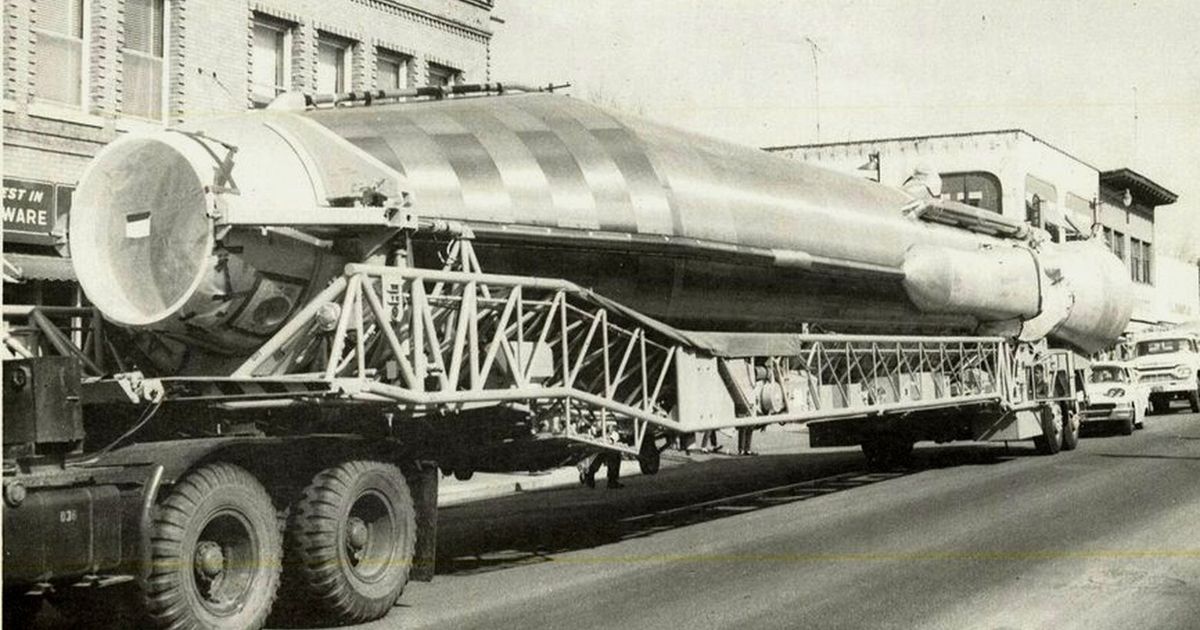A UFO center and a nuclear missile silo overlap in Eastern WA

IN PROFILING PETER Davenport and his National UFO Reporting Center, there is something else that is part of his life, and it has little to do with alien spacecraft.
Davenport owns one of the nine decommissioned Atlas E nuclear missile silos in this state, all near Fairchild Air Force Base by Spokane.
“For some reason, I always wanted to own a nuclear silo,” he says.
The one that Davenport bought in 2006 for $100,000 is in the little town coincidentally named Davenport in Lincoln County.
He keeps a few file cabinets with UFO paperwork in the 18,000-square-foot underground concrete structure. Mostly, this dank, dark silo that’s been stripped of most of its equipment is a reminder that our worries about Russia go back decades. Putin is just the latest incarnation.
Davenport’s silo has become part of local lore because of what happened there 20 years ago.
A state tax auditor was shot inside it on June 12, 2002, his body dismembered. Body parts later were found near Cheney, some 40 miles away. Police turned up 320 pieces of evidence, according to the Spokane Historical Society.
Ralph H. Benson, who had been living in the silo and died in 2004 in prison, was convicted of first-degree murder. The tax auditor, Roger Erdman, had gone to the silo to inspect Benson’s business records to determine whether he was delinquent.
Davenport originally moved from Seattle to the wheat-growing area with the thought of living in the silo, accessed on gravel on Old Missile Site Road North, past wire gates and brushland.
He changed his mind about living in the silo.
“I didn’t want to be out there by myself, thought of as some weirdo who collects UFO reports and lives in a missile silo,” he says.
Instead, Davenport bought a manufactured home in Harrington, 14 miles away.
The silo is part of our Cold War history.
There were nine Atlas E silos; each held one 82-foot-long missile equipped with a four-megaton nuclear warhead, the fireball enough to destroy downtown Seattle in a 3-mile radius. The Atlas E had a range of 8,700 miles, enough to reach the Soviet Union.
In addition, there were three Titan I complexes near Larson Air Force Base at Moses Lake, each complex housing missiles in three interconnected silos. That made for a total of 18 ICBMs in this state.
Eastern Washington, near Air Force bases, was a logical place for them; the silos were in large, open areas, away from vulnerable coastal cities.
Five airmen worked the controls in 24-hour shifts, living in rooms connected to the “coffin” — where the missile was held, horizontally, in a structure made of 1½-foot diameter metal pipes — by tunnels. For launch, the missile was raised upright. None was ever fired.
The government didn’t keep the silos secret. A 1961 Air Force photo shows the Davenport Atlas E being trucked right through town.
The ICBMs lasted only four years, from 1961 to 1965. Then they became outmoded, and the properties sold to private individuals.
Six decades later, we’ve moved on to Minuteman III intercontinental ballistic missiles; an unarmed one was successfully tested from Vandenberg Space Force Base in California on Aug. 16.


